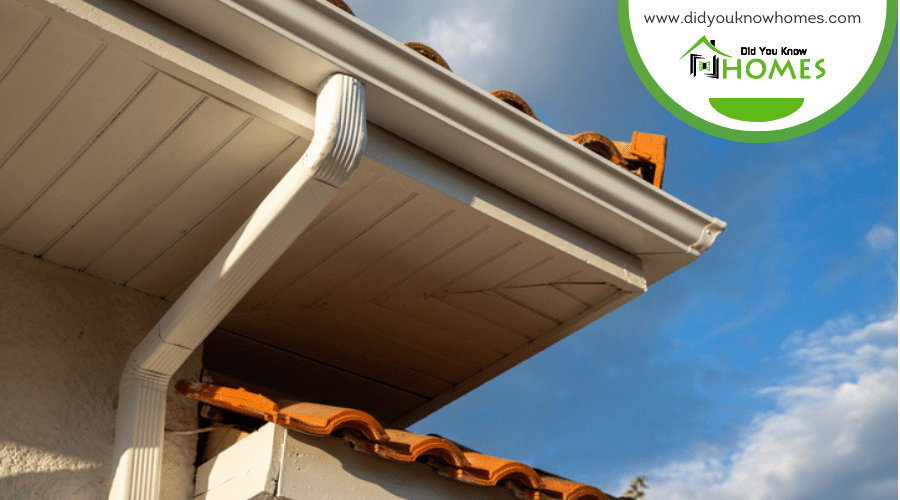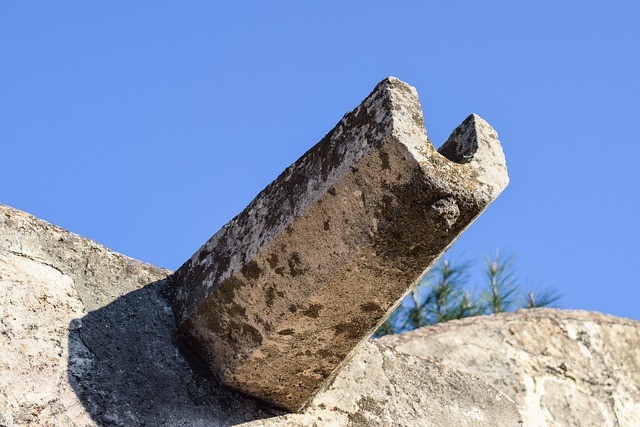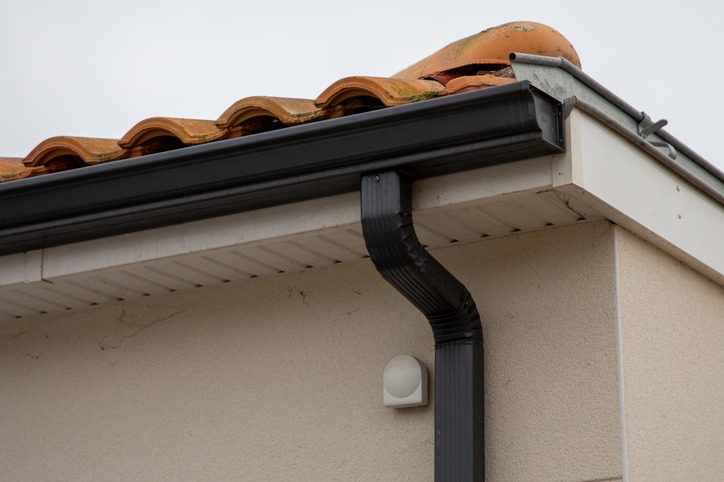You’ve seen gutters evolve from simple Roman aqueducts to the sleek, efficient seamless gutters of today. Initially made of lead, stone, and wood, gutters became more accessible during the Industrial Revolution with materials like cast iron. The game changed in the 1960s with lightweight, rust-free aluminum and vinyl, paving the way for the seamless revolution. These gutters reduce leaks, fit perfectly, and last longer, marrying functionality with style for over six decades. With advancements in materials and technology, including smart and eco-friendly options, your home’s exterior has never looked better or been more protected. Discover the innovations that keep your home dry and stylish.
Key Takeaways
- Romans introduced gutters in Britain in 47 AD, marking the beginning of gutter technology evolution.
- Medieval advancements utilized materials like lead, stone, and wood for durability and aesthetics.
- The Industrial Revolution made gutters accessible to the masses with affordable cast iron and steel options.
- Seamless gutters, emerging in the 1960s, minimized leaks and improved aesthetics with materials like aluminum.
- Future gutter technology focuses on smart systems, eco-friendly materials, and advanced protection for enhanced functionality and sustainability.
Ancient Gutter Beginnings
Gutters, introduced in Britain by the Romans in 47 AD, revolutionized water drainage with their clay brick construction. Before this, managing rainwater was a challenge, but the Romans’ innovation brought about a significant change. They ingeniously utilized clay bricks, a material both abundant and durable, to channel water away from buildings, protecting the foundations and preventing erosion. This early system laid the groundwork for what would become a critical component of architecture.
The introduction of gutters wasn’t just about functionality; it showcased the Romans’ forward-thinking approach to urban planning and their prowess in engineering. These ancient gutters were precursors to more sophisticated water drainage systems, including the use of gargoyles on roofs, which would come much later. While the original clay brick gutters were effective, the evolution towards more durable materials was inevitable.
Fast forward to the 20th century, and you’ll find the advent of seamless gutters. Popularized in the 1960s, this innovation minimized leaks, offering a continuous, clean appearance that has remained popular for over 60 years. The leap from clay bricks to seamless gutters marks a remarkable journey of advancement, demonstrating humanity’s ongoing quest to improve and innovate.
Medieval Gutter Innovations
As you explore the evolution of gutter technology, you’ll find that medieval innovations greatly shaped today’s systems. The use of materials like stone, clay, wood, and lead not only enhanced functionality but also added a decorative touch. These advancements, along with the introduction of the first downspout at the Tower of London, marked a pivotal shift in design and efficiency.
Medieval Materials Used
During the Medieval period, many gutters were crafted from durable materials like lead and stone, showcasing a blend of functionality and aesthetic appeal. You’ll find that these materials weren’t just about channeling water away; they were integral to the architectural beauty and longevity of buildings. Let’s take a closer look at what made these materials stand out.
| Material | Durability | Aesthetic Appeal |
|---|---|---|
| Lead | High | Decorative |
| Stone | Very High | Architectural |
| Wood | Moderate | Natural |
Lead and stone gutters were not just practical solutions for water drainage; they were medieval innovations that combined durability with aesthetics, reflecting the era’s values. These materials ensured buildings remained structurally sound and visually striking, a demonstration of the ingenuity of medieval gutter technology.
Design Advancements
Reflecting the era’s architectural and aesthetic values, medieval gutter innovations seamlessly blended functionality with design, marking a significant shift in rainwater management systems. You’ve seen how traditional materials like stone evolved, but it was lead that truly revolutionized gutters. Its durability and aesthetic appeal won the favor of European nobility, setting a precedent for what you’d expect from gutters today. This evolution wasn’t just about materials; it was about seamlessly integrating these systems into the very fabric of buildings, enhancing both their utility and beauty. The design advancements of the Middle Ages laid the groundwork for the metal and aluminum gutters you see now, ensuring that the leap from traditional to modern was as much about performance as it was about preserving architectural integrity.
Industrial Revolution Impact
The Industrial Revolution sparked a transformation in gutter technology, making these essential systems more affordable and widespread. Before this era, gutters were a luxury few could afford, but the advent of cast iron gutters changed the game. These durable, efficient systems became more accessible, thanks to the mass production capabilities that the Industrial Revolution introduced. Suddenly, homeowners and builders alike could incorporate these essential water management systems into their constructions, greatly boosting their adoption.
Moreover, the Industrial Revolution wasn’t just about making existing solutions more affordable; it was also a hotbed for innovation. The development of metal rolling machines paved the way for steel gutters, offering a robust alternative to their cast iron predecessors. This period of intense creativity and industrial capability set the stage for future advancements in gutter technology, including the revolutionary seamless aluminum gutters.
Thanks to the Industrial Revolution, gutters moved from being a niche, high-end product to a widespread, essential component of modern buildings. The era made gutters affordable, accessible, and introduced the concept of mass production into the industry, laying the groundwork for the widespread adoption of these essential systems.
Twentieth Century Developments
As you explore the twentieth-century advancements in gutter technology, you’ll find that innovations like metal rolling machines and the adoption of steel marked the era’s early material shifts. By the mid-century, the industry saw a leap with the introduction of seamless aluminum gutter machines, notably enhancing efficiency and reducing leak risks. The emergence of seamless gutters, leveraging aluminum’s lightweight and corrosion-resistant traits, set a new standard in durability and performance for decades to come.
Early 20th Century Materials
In the early 20th century, metal rolling machines revolutionized gutter production by enabling the mass manufacture of steel gutters. This innovation marked a pivotal moment in the gutter industry, shifting the landscape towards more durable and efficient systems. As the century progressed, aluminum emerged as the superior choice for gutters, largely due to its lightweight and corrosion-resistant properties. The advent of seamless aluminum gutter machines further transformed the scene. These machines allowed for the creation of seamless gutter designs, greatly reducing the likelihood of leaks and clogs compared to traditional gutters. This leap forward not only enhanced the durability and efficiency of gutter systems but also their aesthetic appeal, setting a new standard in gutter technology.
Mid-Century Installation Advances
Mid-century advancements in gutter installation, particularly the introduction of seamless gutters by Art Knudson in the 1960s, revolutionized home drainage systems. You’re now witnessing the game-changing shift towards efficiency and aesthetic appeal.
| Feature | Benefit |
|---|---|
| Aluminum | Lightweight, corrosion-resistant |
| Seamless Design | Reduces leaks |
| Fewer Joints | Minimizes clogs and blockages |
| Machine-Cut | Precision, continuous piece |
Seamless gutters brought about a new era. Art Knudson’s machine allowed for gutters to be cut in one continuous piece, slashing the chances of leaks. With fewer joints, these gutters are less prone to clogs, elevating their efficiency. Over 60 years later, seamless gutters remain a top choice, celebrated for their durability, minimal maintenance, and sleek appearance.
Seamless Gutters Emergence
You’ll find that the emergence of seamless gutters in the twentieth century marked a significant leap forward in gutter technology. Invented by Art Knudson, a machine cutting seamless gutters into one piece revolutionized the industry. This innovation allowed for seamless installation of k-style gutters, greatly minimizing leaks and enhancing efficiency. Aluminum, becoming popular by the 1960s for its lightweight and rust-resistant properties, was the material of choice for these gutters. The seamless design not only improved the durability and effectiveness of gutter systems but also maintained its position as a top choice for homeowners even 60 years later. The evolution to seamless gutters represents a pivotal moment, showcasing a blend of innovation, practicality, and long-lasting performance in home maintenance.
Introduction of Aluminum and Vinyl
Aluminum swiftly became the go-to for gutter systems in the 1960s, thanks to its lightweight and anti-rust properties, while vinyl offered an affordable, low-maintenance alternative. This evolution marked a significant leap from traditional gutter systems, showcasing how technology has continuously aimed to enhance efficiency and durability in home maintenance solutions. The introduction of aluminum and vinyl not only revolutionized gutter technology but also paved the way for the development of seamless gutters, which further improved the overall performance of gutter systems.
| Material | Benefits | Impact on Gutter Technology |
|---|---|---|
| Aluminum | Lightweight, Anti-rust | Revolutionized efficiency and durability |
| Vinyl | Affordable, Low-maintenance | Offered cost-effective, resilient solutions |
| Seamless Gutters | Minimized leaks, Continuous appearance | Replaced traditional sectional gutters |
This table illustrates the profound impact of aluminum and vinyl on gutter technology, highlighting their strengths and the consequent advancements in the industry. By embracing these materials, the evolution of gutter systems took a significant stride towards providing homeowners with more reliable, long-lasting, and aesthetically pleasing options. So, as you consider upgrading your home’s gutter system, remember the pivotal role these materials have played in shaping the current landscape of gutter technology.
Seamless Gutter Breakthrough
Building on the advancements of aluminum and vinyl, the introduction of seamless gutters in the 1960s marked a significant leap forward in gutter technology. Art Knudson was at the forefront of this innovation, inventing a seamless gutter machine that could cut gutters in one piece. This minimized leaks and heralded a new era in how homeowners would manage rainwater runoff.
Seamless gutters offered a continuous appearance, eliminating the unsightly seams and joints that were common with their predecessors. This not only enhanced the aesthetic appeal of homes but also contributed to reduced maintenance needs. Without seams, there were fewer places for debris to accumulate, making gutters easier to clean and maintain.
The seamless gutter machine specifically transformed k-style gutters into seamless designs, revolutionizing gutter technology. This innovation has been a game-changer, providing homeowners with a durable and effective solution for over 60 years. The durability of seamless gutters, combined with their minimized leaks, has made them a preferred choice for homeowners seeking a reliable gutter solution.
In essence, the breakthrough of seamless gutters has revolutionized gutter technology, offering a blend of aesthetic appeal, reduced maintenance, and unmatched durability.
Benefits of Seamless Technology
Choosing seamless gutter technology guarantees your home not only looks stylish but also benefits from a much lower number of leaks. By having fewer joints, seamless gutters greatly reduce the risk of water damage to your property. These custom-fit solutions are not just about functionality; they also provide a sleek and continuous appearance that enhances your home’s aesthetics. Unlike traditional gutters, seamless varieties are formed on-site using a machine, ensuring a perfect fit for each unique property layout.
Since their invention in the 1960s, seamless gutters have revolutionized the gutter industry. This innovation brought about a shift towards durability and effectiveness in rainwater management systems. Over 60 years later, seamless gutters have remained a top choice for homeowners, thanks to their exceptional performance and longevity. The machine-formed technology ensures that each section of the gutter is precisely tailored to your home, eliminating common issues associated with sectional gutters.
In essence, opting for seamless gutters means you’re choosing a solution that combines aesthetic appeal with unmatched functionality. Their durability, coupled with the effectiveness in preventing leaks, makes them an invaluable investment for any homeowner looking to protect and beautify their property.
Contemporary Gutter Materials
Today’s gutter materials blend durability, cost-efficiency, and visual appeal, offering you choices that best fit your home’s needs. The evolution in gutter technology has introduced modern gutter materials that guarantee your home’s exterior remains both functional and stylish. Here’s a quick rundown:
- Aluminum: Dominating the market, aluminum gutters are celebrated for their lightweight nature and exceptional corrosion resistance. They strike the perfect balance between durability and cost, making them a go-to option for many homeowners.
- Galvanized Steel: Known for its robustness, galvanized steel offers unmatched durability. Despite being heavier, it stands up well against the toughest weather conditions, ensuring longevity.
- Copper: Elevating aesthetics to new heights, copper gutters add a touch of elegance with their distinctive appearance. While pricier, their visual appeal and durability make them a worthwhile investment.
- Vinyl: As the most affordable option, vinyl gutters appeal to budget-conscious homeowners. They offer ease of installation and come in a variety of colors. However, they may not boast the longevity of their metal counterparts.
Embracing these contemporary materials means you no longer have to compromise between aesthetics, durability, and cost-efficiency. Whether you’re renovating or building anew, there’s a gutter material that’s just right for your home.
Future Gutter Technology Trends
As we look toward the horizon, you’ll find that gutter technology is rapidly evolving, introducing smarter, more durable solutions to protect your home. Advanced gutter protection systems are set to offer enhanced durability and longevity, ensuring that your investment pays off in the long run. Imagine smart gutter systems equipped with sensors, capable of detecting debris and clogs in real-time. This innovative technology not only saves you the hassle of manual cleaning but also considerably reduces the risk of water damage.
Furthermore, the integration of gutter technology with home automation is on the rise, promising seamless maintenance and control right at your fingertips. Innovations in gutter materials are equally impressive, with eco-friendly options and self-cleaning features leading the charge towards more sustainable and convenient solutions. You’ll also witness an improved gutter design that doesn’t compromise on functionality or aesthetics, perfectly aligning with evolving consumer preferences and architectural styles.
In essence, the future of gutter technology is bright, marked by a blend of functionality, aesthetics, and eco-friendly options. These advancements are designed to meet your needs, ensuring that your home remains safe and stylish, rain or shine.
Frequently Asked Questions
What Is the History of Seamless Gutters?
Seamless gutters’ history is marked by manufacturing advancements and material innovations. Their design evolution and improved installation methods offer cost-effective, durable solutions with minimal maintenance needs, suiting various regional preferences and reducing environmental impact.
What Is the History of K-Style Gutters?
K-style gutters, developed in the 60s, offer you sleek design benefits and better water handling. They’re popular for their aesthetic appeal, durable material options, and efficient installation process, balancing cost with low maintenance needs.
What Did People Use Before Gutters?
Before modern gutters, you’d find ancient drainage solutions like stone conduits and wooden troughs on roof slopes. Earthenware pipes, drip stones, and even simple rain dispersal methods marked the architectural evolution of water management.
Why Are Seamless Gutters Better?
Seamless gutters are better because they prevent leaks, last longer, and boost your home’s look. They’re easy to maintain, custom-fitted, come in various materials and colors, and are cost-efficient and quick to install.
Conclusion
You’ve journeyed through the evolution of gutter technology, from its ancient beginnings to the innovative seamless systems of today. Along the way, materials like aluminum and vinyl have revolutionized how we manage water flow around our homes. Now, with seamless gutters, you’re experiencing fewer leaks, less maintenance, and enhanced curb appeal. As we look to the future, anticipate even more advanced materials and designs. Embrace these changes, knowing your home’s protection is becoming more efficient and effective.




